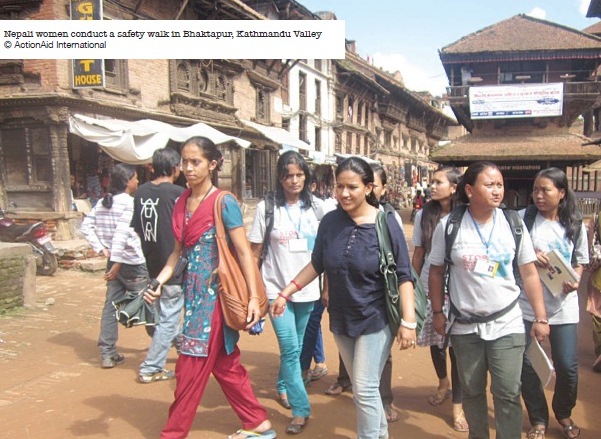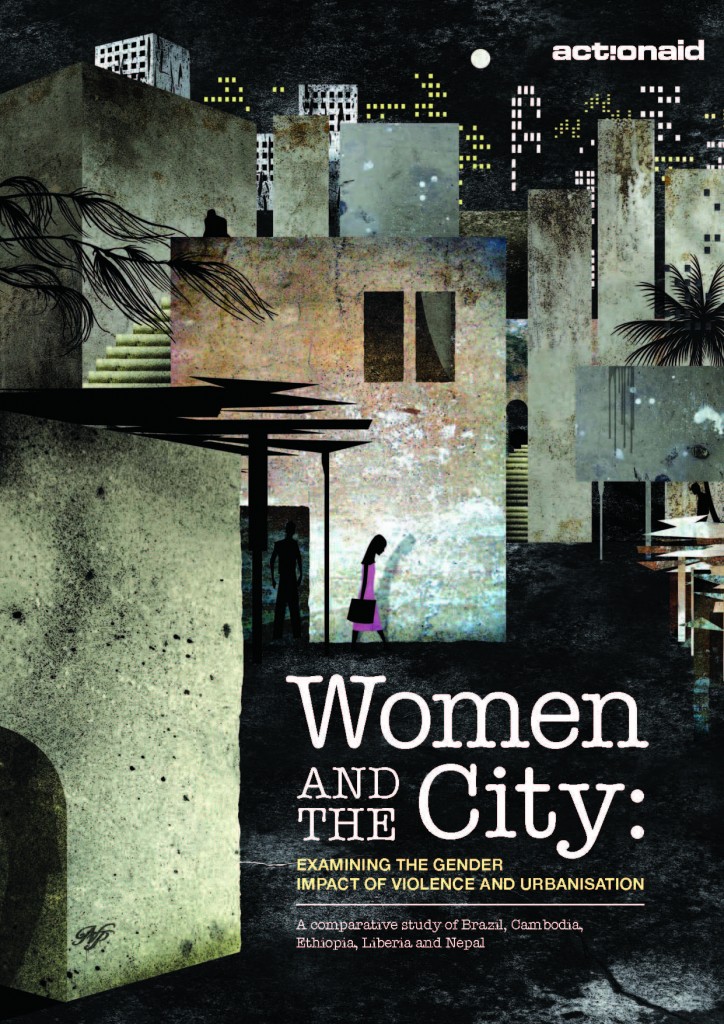
“I carry safety pins with me while travelling. Whenever I feel that I am being harassed by someone around me, I poke him with my safety pin. It alerts the person who is conducting such violence on me. I was taught to do it by seniors in my college. I was hesitant to do it at first, but I found that when my friends did it, the person who harasses tends to back off. So that gave me confidence to use it by myself as well. .. ” – A college student in Nepal
“A woman I know felt safe in this community because of the [gangsters/traffickers] who took care of the community, who watched over everything that happened. But that only gives you security when they don’t have their eye on you [i.e., want to date you]…the man who watched over the entrance to the community one day decided he wanted to go out with her, and he told her to go get dressed up to go out the next day at 7 p.m. If she didn’t go out with him, he was going to kill her children and husband. She didn’t have a choice.” – A woman in Brazil
“When we [are] leaving factory, there are crowd[s] and gangsters often come to touch women’s bottoms and they laugh and feel it’s normal. There have also been instances where workers were sexually assaulted by gangsters during daylight hours.” – A garment factory worker in Cambodia
How safe are public places for women who work in factories in Cambodia, for university students in Liberia, for street vendors in Ethiopia, for women commuters in Nepal, and for women in Brazil?
 The NGO ActionAid conducted a participatory study to find out the answer. Through using safety audits, focus groups, and mapping, groups of women discussed and showed what about their cities make them feel insecure. Unsurprisingly, there were a lot of reasons why they felt unsafe, including personal experiences of harassment or assault, wariness of local drug traffickers, and poorly lit roads.
The NGO ActionAid conducted a participatory study to find out the answer. Through using safety audits, focus groups, and mapping, groups of women discussed and showed what about their cities make them feel insecure. Unsurprisingly, there were a lot of reasons why they felt unsafe, including personal experiences of harassment or assault, wariness of local drug traffickers, and poorly lit roads.
The findings from the study and the recommendations for making cities safer for women are available in the fascinating report Women and the City: Examining the gender impact of violence and urbanisation.
I highly recommend reading the report as it provides an in-depth slice of information about five demographics of women in five different countries and because the study was conducted and written in such a way that the women were able to share their stories and speak for themselves.
Through email correspondences, the report author Alice Taylor told me why she thinks the study is important:
“I think it’s crucial to look at issues of how cities are developed and are growing — in ways that are equal and unequal to their citizens — and violence against women together, to see how different kinds of risk factors intersect to influence women’s lives.”
She also spoke to its challenges:
“It was challenging to analyze and bring together such different contexts and approaches into one report, but it demonstrated how prevalent forms of insecurity are for women across urban settings.”
And she shared three findings that stuck out to her the most from her process of writing the report:
“First, the ways in which women constantly have to calculate and avoid routes in their own cities – that was universal.
Second, the finding about the popularity of mapping, which I think holds a lot of promise as a community-based and participatory approach as well as a powerful advocacy tool.
Third, I think there’s a lot to develop in the future in terms of ethics and “do no harm” when doing research on women’s urban safety, as well as monitoring and evaluation to understand what works.
After the five country profiles, the report concludes with six recommendations for making cities safer for women (starting on page 61):
1. Raise awareness of the problem
2. Build government commitment
3. Change social norms for prevention
4. Build institutional capacity to address the problem
5. Strengthen networks for advocacy
6. Conduct research for evidence-based programmes and policies.
Their recommendations aligned closely with the ones I wrote in my book (e.g. raising awareness, changing social norms, and conducting research).
In conclusion, Taylor offers her thoughts on where further research is necessary:
“I think a big question out there, is to further articulate gender analysis around urban safety: which types urban violence/ insecurity are particularly dangerous for women (i.e., poor men experience higher murder rates and are also greatly affected by poverty), why, and what interventions can be designed.”

Beckie says
Its very exciting that this topic is getting so much serious attention.